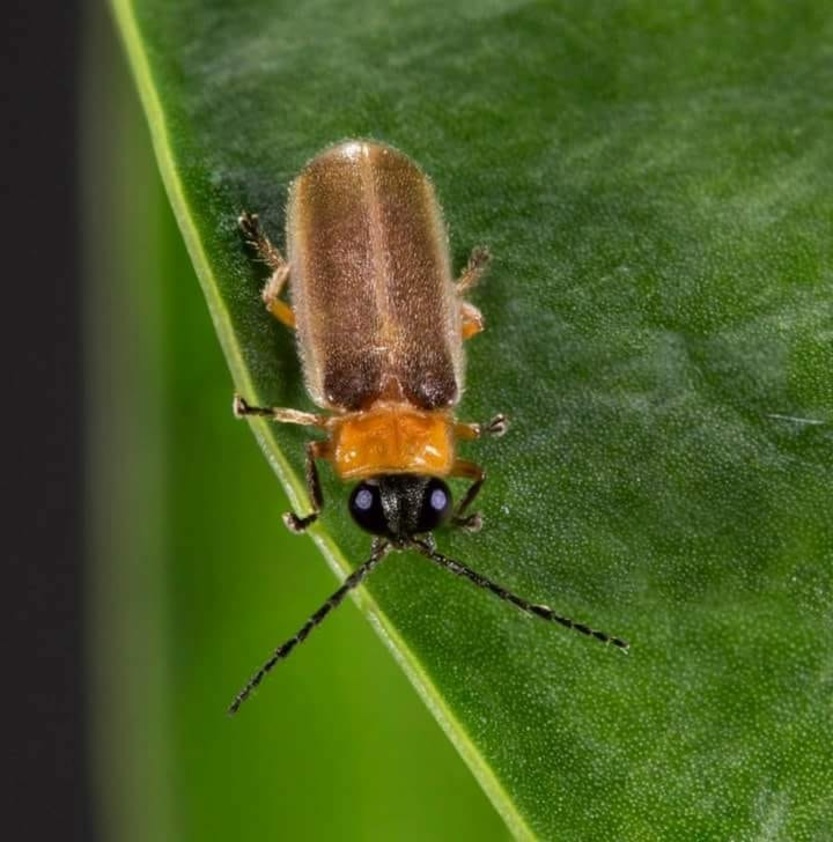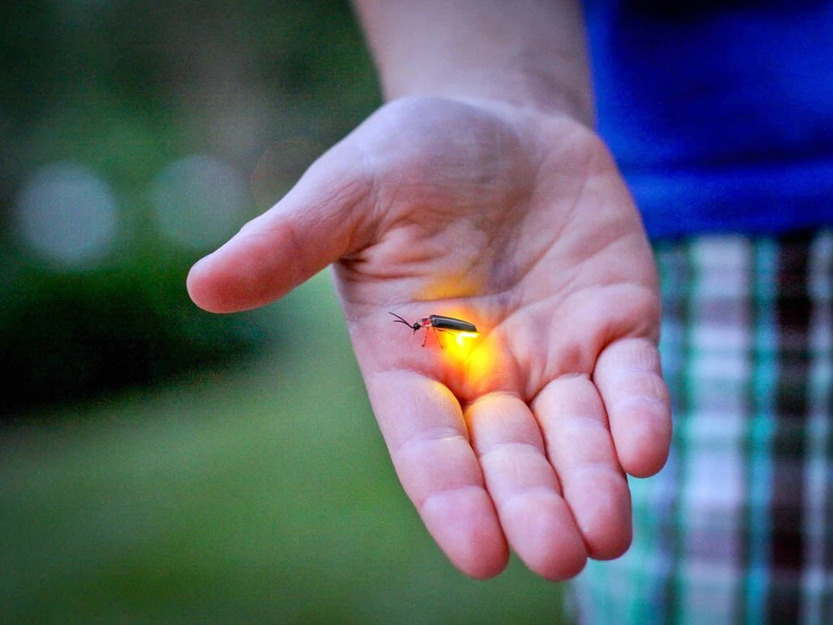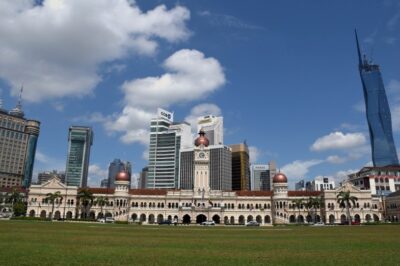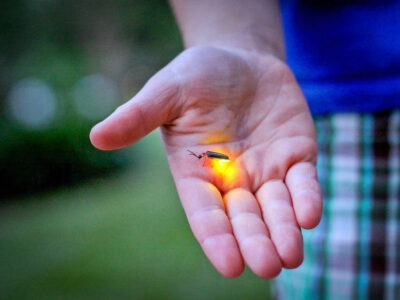Exploring the Beauty and
Fragility of Fireflies Beetles
Overview: Fireflies and their unique bioluminescent abilities.
Fireflies, also known as lightning bugs, are a captivating group of insects that stand out not only for their charming appearance but also for their remarkable ability to produce light through a process called bioluminescence. Found in various regions around the world, these luminous beetles belong to the Lampyridae family and encompass thousands of species, each with its own distinct patterns of light.


Bioluminescence, the phenomenon at the heart of the fireflies’ magical glow, is a chemical reaction unique to certain organisms. Within the firefly’s abdomen, specialized cells contain luciferase enzymes that react with oxygen and a pigment called luciferin. When these elements combine, they emit a gentle, greenish-yellow light that is visible to the human eye. This natural illumination serves several vital purposes in the fireflies’ lives, from attracting potential mates to deterring predators and even communicating within their communities.
The dance of light orchestrated by fireflies is a symphony of courtship and survival. Males use specific light patterns to broadcast their availability and attract females, with each species having its own distinct rhythm and sequence. Female fireflies respond with their own coded flashes, initiating a delicate conversation of light in the darkness. Yet, beyond the romantic allure, this bioluminescence holds ecological significance. Fireflies play a role in pollination, aiding in the fertilization of plants under the cover of night. Additionally, their presence helps control populations of other insects, contributing to the balance of local ecosystems.
The unique bioluminescent abilities of fireflies not only enrich our understanding of the natural world but also serve as a reminder of the intricate connections between species and the delicate dance of life that unfolds beneath the stars.
About an hour drive from Kuala Lumpur is the small coastal town of Kuala Selangor. this town is one of the important historical sites for the state of Selangor and things get interesting when the night is covered with darkness and comes alive with the enchanting glow of fireflies! If you’re planning a visit to witness this mesmerizing spectacle, you’ve chosen one of the best places in the world for firefly sightings.
1. Geographical Regions: Kuala Selangor, a charming district in the state of Selangor, is renowned for its thriving firefly populations. Here, you can embark on a magical journey along the Selangor River, where the fireflies call the mangrove trees home. These mangrove forests create the perfect conditions for fireflies to thrive, with the tree’s proximity to the river providing an ideal environment for their mating rituals.
2. Habitats Conducive to Firefly Populations: Within Kuala Selangor, two main firefly-watching locations stand out:
a. Kampung Kuantan Firefly Park: Located near the Kuala Selangor Nature Park, this park is a hotspot for firefly sightings. The dense mangrove trees along the riverbanks serve as the primary habitat for these bioluminescent insects.
b. Kuala Selangor River Cruise: An evening boat ride along the Selangor River is a must-do. Skilled boatmen will take you through the heart of the mangroves, offering an up-close and personal encounter with the fireflies.
3. Tips for Optimal Firefly Watching:
- Timing: For the best experience, plan your visit during the firefly season, which typically runs from late May to late September. The fireflies are most active during this period.
- Weather Conditions: Clear, moonless nights are ideal for firefly watching. Cloudy or rainy nights can reduce visibility, so keep an eye on the weather forecast.
- Minimal Disturbance: When observing fireflies, avoid using flashlights or camera flashes as they can disrupt the fireflies’ natural behavior. Red light is less disturbing to them, so consider using a red flashlight if needed.
- Silence and Stillness: While on the river cruise or at the firefly park, maintain a calm and quiet demeanor. The fireflies’ enchanting displays are most captivating when you allow them to illuminate the night in peace.
- Respect for Nature: Remember that you’re in a fragile ecosystem. Do not disturb the mangrove trees, and be mindful of the environment throughout your visit.
As a local resident, I can attest to the breathtaking beauty of fireflies in Kuala Selangor. These luminous creatures light up our nights and remind us of the importance of preserving their natural habitats. So, plan your visit, immerse yourself in the wonder of fireflies, and create memories that will last a lifetime. Enjoy the magic of Kuala Selangor’s fireflies!
Threats They Facing
In recent years, the mesmerizing fireflies, those bioluminescent marvels of nature, have been facing a myriad of challenges that threaten their existence. These delicate creatures, which have graced our nights with their enchanting glow for centuries, are now struggling to survive in a world increasingly marked by human activity.
1. Light Pollution: One of the gravest threats to fireflies is light pollution. As urban areas expand and artificial lights grow brighter, the natural darkness fireflies rely on for their mating displays is fading. Artificial lighting disrupts their intricate courtship rituals, making it difficult for them to find and attract potential mates. Fireflies are not alone in suffering from this menace; countless other nocturnal creatures face similar struggles due to excessive illumination.
2. Habitat Loss: The destruction of natural habitats, particularly wetlands and forests, has left fireflies with fewer places to call home. Urbanization, agricultural expansion, and deforestation have all contributed to the loss of crucial breeding and foraging grounds. The degradation of these habitats not only reduces firefly populations but also threatens the diverse ecosystems they are a part of.
3. Pesticide Use: Pesticides, though designed to combat agricultural pests, inadvertently harm fireflies as well. These chemicals not only poison their prey, leading to reduced food sources, but they also pose a direct threat to fireflies when they come into contact with them. The indiscriminate use of pesticides disrupts the delicate balance of nature, with fireflies suffering as collateral damage.
Conservation Efforts and Importance:
However, it’s not all doom and gloom. Conservationists, scientists, and communities are rallying to protect fireflies and their habitats.
1. Ongoing Conservation Projects: Around the world, numerous conservation projects are dedicated to safeguarding fireflies. These initiatives focus on preserving their habitats, conducting research to better understand their needs, and raising awareness about the importance of these enchanting insects.
2. Community Involvement: Local communities play a vital role in firefly conservation. Many have initiated efforts to reduce light pollution in their areas, such as implementing ‘lights out’ programs during firefly mating seasons. Community engagement is crucial for ensuring the success of such initiatives.
3. Indicators of Ecosystem Health: Fireflies are not just captivating to watch; they are also critical indicators of ecosystem health and biodiversity. Their presence in an area signifies a healthy environment with thriving populations of insects and other small creatures. Preserving fireflies means preserving the broader ecological balance.





